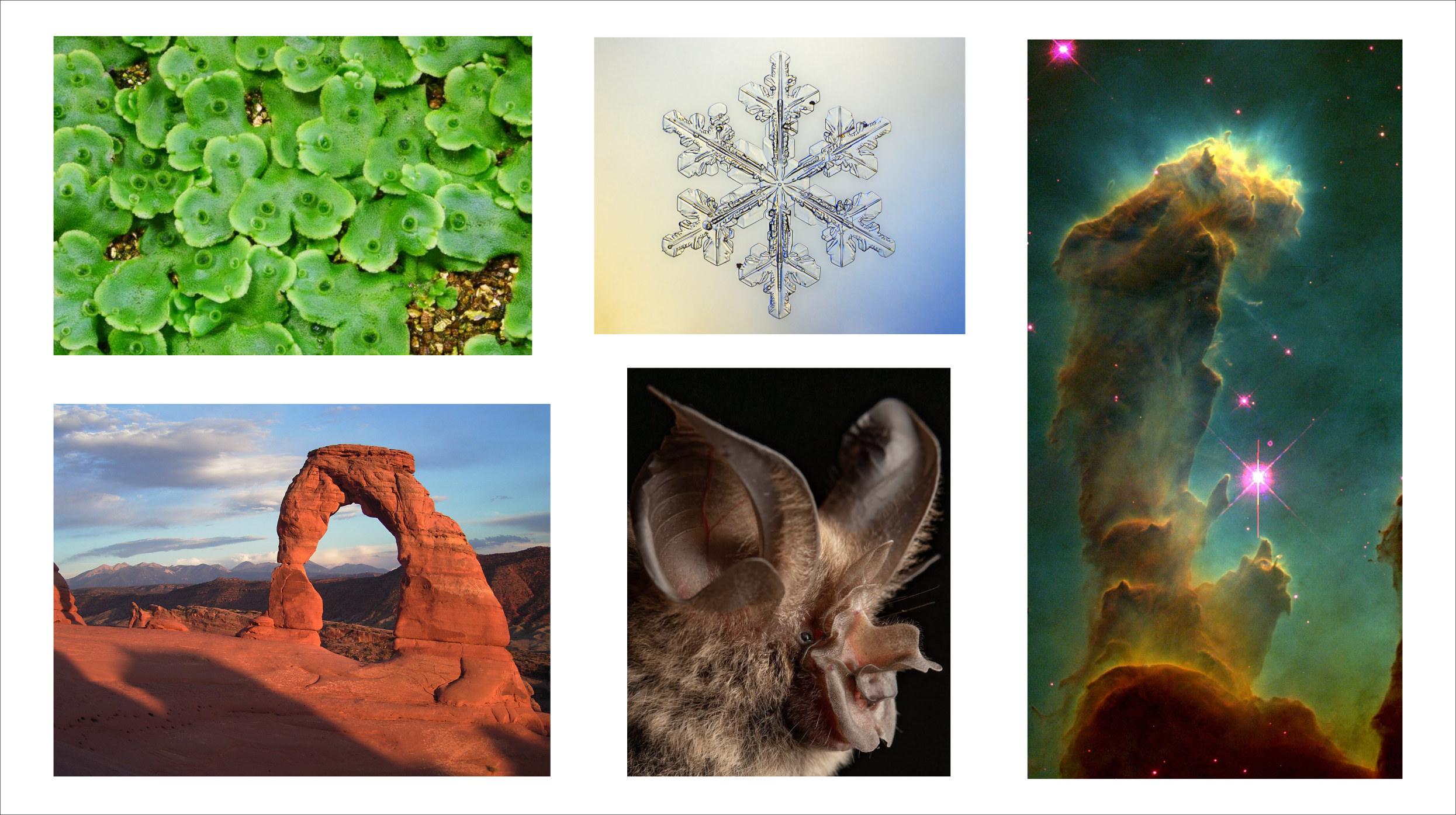Would the world look beautiful without eyes? Not in the sense of being blind. I mean to consider a world without eyes, where evolution never developed organs that perceive the world through sensing light. If you placed humans in this world, what would they find beautiful?
To begin with an easy case, we can start by removing life entirely. They could look up at the stars with telescopes and marvel at the spiral galaxies, the craters of the Moon, and the clouds of interstellar dust.
Returning to Earth, our imaginary humans could collect shiny diamonds (not facetted), raw gold ore, or simply enjoy the symmetry of a snowflake. They would still wonder at landscapes. Even stripped of all vegetation down to the slightest bush, the majestic peaks of the Himalayas, the stunning Niagara Falls, or the delicate red rock bridges of Arches National Park would still present beautiful views.
However, geological formations might be an edge case. Even if the landscape is devoid of living organisms, rocks like limestone are composed of dead sea creatures, which means some of these formations would not exist without life. But I’ll set this aside; it is likely that simple life forms without eyes would be sufficient for creating limestone.
If we add life back to the picture, at first, we might think we could safely add plant life. After all, flowers don’t have eyes. But the shapes of flowers have been heavily influenced by the eyes of pollinators like bees. This is evident when observing flowers’ UV light emissions, a frequency that many pollinator insects can perceive. They communicate like a landing pad for a helicopter.

To be safe, we can look at what plants were like before animals colonized land. There is a brief period in Earth’s history, between 470 and 430 million years ago, when plants began living on land, but animals were only found in the sea. We are left with moss-like, or liverwort-like plants. Not the most glamorous plants, but they deserve a look.
In the animal kingdom, it is trickier to rule out the role of eyes in the shapes of organisms. Visual perception is central to the bodies of many prey and predator species, as well as their sexual behavior. In this world, there would be no colorful peacock feathers, no chameleons, and no pretty faces. Even for creatures living in almost complete darkness, like deep-sea fish, eyes play a crucial role in sensing bioluminescent light. However, our imaginary explorer could still observe structures that have been clearly optimized for functions unrelated to eyes. For instance, if our imaginary world contains animals using echolocation, our explorer could observe strctures similar to the noses and ears of bats that are shaped to process the emission and reception of ultrasounds.

Optimized vs non-optimized beauty.
At first, this thought experiment feels like drawing the boundary between mineral and organic / man-made beauty. But perhaps a better name would be optimized vs. non-optimized beauty. It is the difference between shapes that have been morphed by how they were perceived by an organism with eyes, such as flowers and their pollinators, or a painting and its painter; and shapes that have been shaped by other constraints. They could still be shapes optimized for a certain function, like the nose of a bat, but they haven’t been optimized to look a certain way.
One could argue that mineral shapes like snowflakes or mountain landscapes have been part of the human environment forever, and that humans’ sense of beauty evolved to find them beautiful. The optimization happened on the side of the eye, not on the side of the object, but the perception has been optimized.
So perhaps one of the best examples of non-optimized beauty is something like the Hubble picture of the Pillars of Creation. Clearly, this is not something we could look at until recently, nor is it something whose appearance has been influenced by our presence (if we set aside the careful choice of artificial coloring used by the astrophotographers).
Departing Thoughts
I have been thinking about this dichotomy for some time, even though it is probably a blurry abstraction. I like that it makes you look past the frontend, the shinny stuff, the tourist attractions, the things that look the way they do because they expect someone to look at them.
It feels like looking at the backend of the visual world—the stuff nobody was supposed to look at. There is something immediate, direct, and honest in the idea of non-optimized beauty that I enjoy.
Want to hear when I post something new?